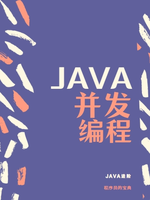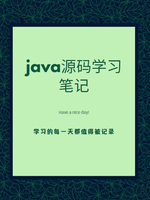1.6.1 拼接结果的存储和比较问题
原则:
- 常量+常量:结果是常量池。
- 常量和变量 或 变量和变量:结果是堆。
- 拼接后调用 intern 方法:结果在常量池。
示例:
package com.github.string.demo7;/*** @author maxiaoke.com* @version 1.0**/public class Test {public static void main(String[] args) {String s1 = "hello";String s2 = "world";String s3 = "helloworld";String s4 = (s1 + "world").intern(); // 将拼接的结果放在常量池中String s5 = (s1 + s2).intern();System.out.println(s3 == s4); // trueSystem.out.println(s3 == s5); // true}}
- 示例:
package com.github.string.demo8;/*** @author maxiaoke.com* @version 1.0**/public class Test {public static void main(String[] args) {final String s1 = "hello";final String s2 = "world";String s3 = "helloworld";String s4 = s1 + "world"; // s1是常量,"world"也是常量,所以s4是常量String s5 = s1 + s2; // s1是常量,s2是常量,所以s5是常量String s6 = "hello" + "world"; // "hello"是常量,"world"是常量,所以s6是常量System.out.println(s3 == s4); // trueSystem.out.println(s3 == s5); // trueSystem.out.println(s3 == s6); // true}}
- 示例:
package com.github.string.demo9;/*** @author maxiaoke.com* @version 1.0**/public class Test {public static void main(String[] args) {String s1 = "hello";String s2 = "world";String s3 = "helloworld";String s4 = s1 + "world"; // s1是变量,"world"是常量,所以s4是变量String s5 = s1 + s2; // s1是变量,s2是变量,所以s5是变量String s6 = "hello" + "world"; // "hello"是常量,"world"是常量,所以s6是常量System.out.println(s3 == s4); // falseSystem.out.println(s3 == s5); // falseSystem.out.println(s3 == s6); // true}}
1.6.2 拼接效率问题
- 示例:
package com.github.string.demo10;/*** @author maxiaoke.com* @version 1.0**/public class Test {public static void main(String[] args) {String str = "0";for (int i = 0; i < 5; i++) {str += i;}System.out.println("str = " + str);}}
不过,现在的 JDK 版本,都会使用可变字符序列对如上的代码优化,不信,反编译查看字节码:
javap -c Test.class
Compiled from "Test.java"public class com.github.string.demo10.Test {public com.github.string.demo10.Test();Code:0: aload_01: invokespecial #1 // Method java/lang/Object."<init>":()V4: returnpublic static void main(java.lang.String[]);Code:0: ldc #2 // String 02: astore_13: iconst_04: istore_25: iload_26: iconst_57: if_icmpge 3510: new #3 // class java/lang/StringBuilder13: dup14: invokespecial #4 // Method java/lang/StringBuilder."<init>":()V17: aload_118: invokevirtual #5 // Method java/lang/StringBuilder.append:(Ljava/lang/String;)Ljava/lang/StringBuilder;21: iload_222: invokevirtual #6 // Method java/lang/StringBuilder.append:(I)Ljava/lang/StringBuilder;25: invokevirtual #7 // Method java/lang/StringBuilder.toString:()Ljava/lang/String;28: astore_129: iinc 2, 132: goto 535: getstatic #8 // Field java/lang/System.out:Ljava/io/PrintStream;38: new #3 // class java/lang/StringBuilder41: dup42: invokespecial #4 // Method java/lang/StringBuilder."<init>":()V45: ldc #9 // String str =47: invokevirtual #5 // Method java/lang/StringBuilder.append:(Ljava/lang/String;)Ljava/lang/StringBuilder;50: aload_151: invokevirtual #5 // Method java/lang/StringBuilder.append:(Ljava/lang/String;)Ljava/lang/StringBuilder;54: invokevirtual #7 // Method java/lang/StringBuilder.toString:()Ljava/lang/String;57: invokevirtual #10 // Method java/io/PrintStream.println:(Ljava/lang/String;)V60: return}
1.6.3 concat 方法拼接
concat() 方法拼接,哪怕是两个常量对象拼接,结果也是在堆中。
示例:
package com.github.string.demo19;/*** @author maxiaoke.com* @version 1.0**/public class Test {public static void main(String[] args) {String s1 = "hello";String s2 = "world";String s3 = "helloworld";String s4 = "hello".concat("world");String s5 = "hello" + "world";System.out.println(s3 == s4); // falseSystem.out.println(s3 == s5); // trueSystem.out.println(s1 + s2 == s5); // false}}








